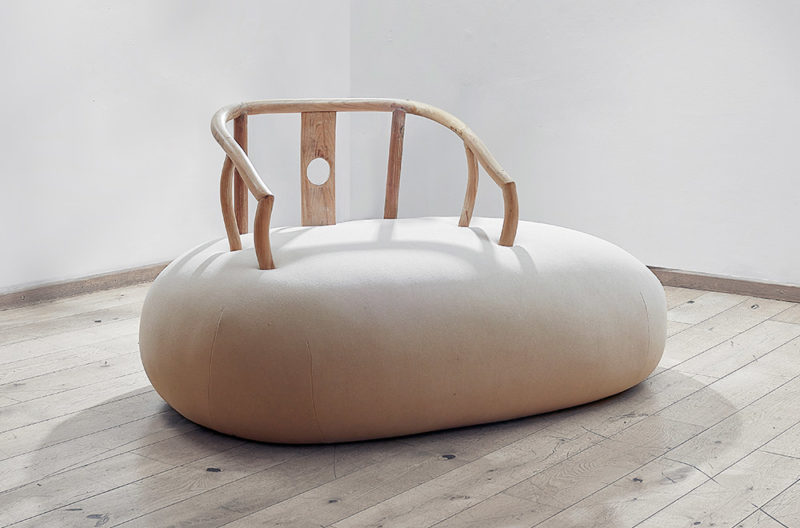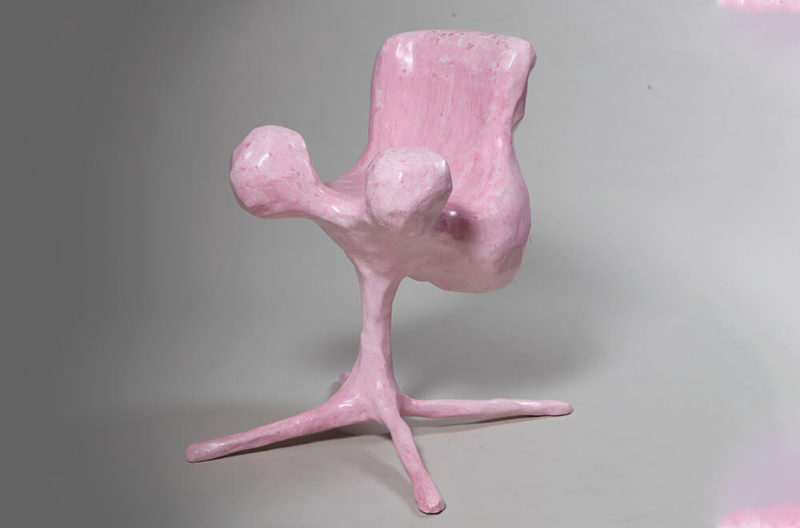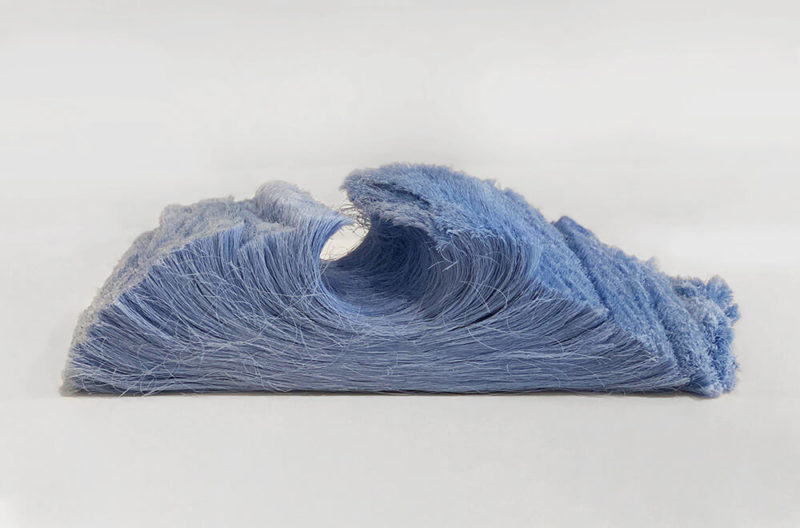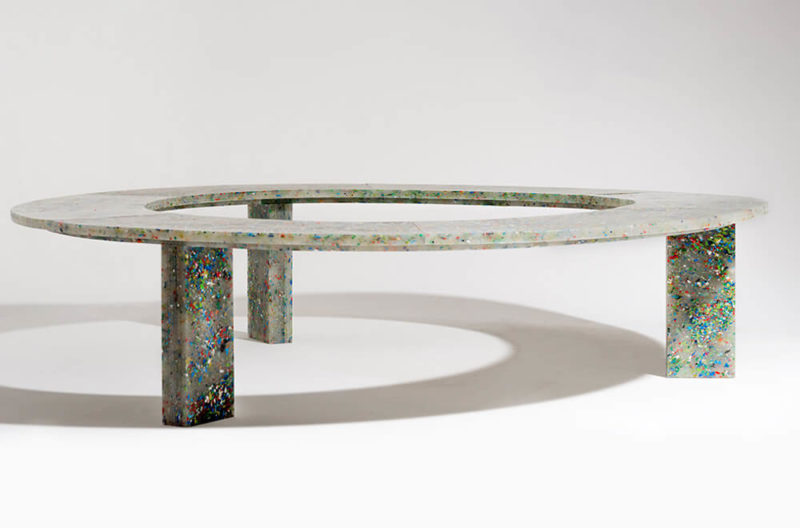Reclaiming the Female Body
Meet the designers using furniture to tell their own stories of the body.
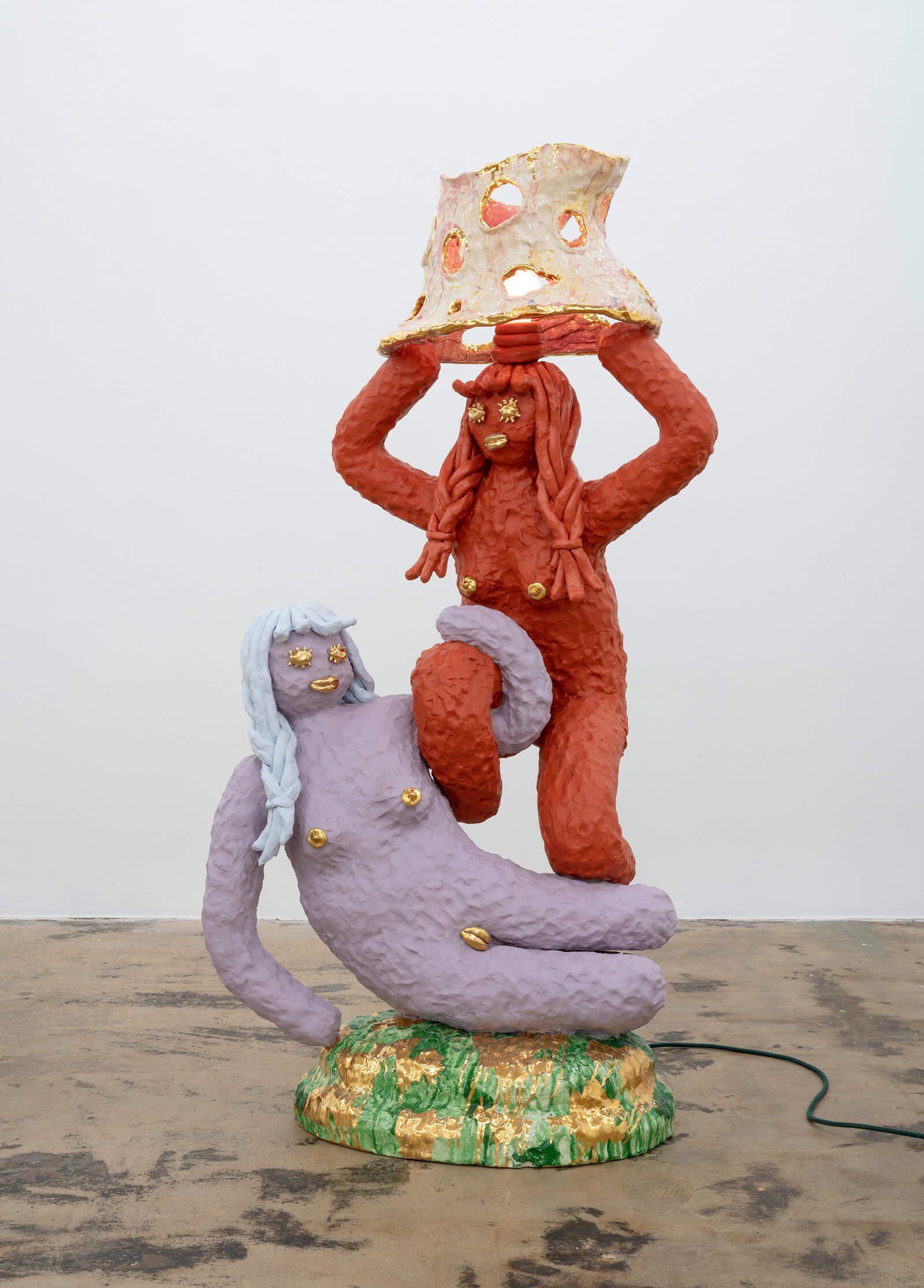
Katie Stout, ‘Double Lady (Roman Embrace)’, 2020
COURTESY: Nina Johnson Gallery
WOMAN AS DESIGN object is nothing new. From the surrealist sex appeal of Salvador Dali’s ‘Mae West Lips Sofa’, or the modernist elegance of the Charles and Ray Eames’s ‘La Chaise’, the female body has long inspired designers and artists alike. Whether symbolising fertility, vanity, purity or sensuality, a woman’s body is a contested field in which ideas about womanhood are played out. For designers, working in the collectible design world today, choosing to work with the female form is as relevant and radical as ever.
The treatment of the female form in collectible design has a complicated history. Works such as Allen Jones’s controversial series ‘Hatstand, Table and Chair’ (1969) take the objectification of the body to the extreme. Described by Jones as a rejection of the minimalist aesthetic of sixties modernism, these life-size, bondage-clad, women-as-erotic-objects were said to embody the spirit of the sexual revolution. Such a characterisation was rejected by feminist activists such as film critic Laura Mulvey, who went as far as to diagnose Jones with a castration complex. Despite calls to boycott his exhibitions and frequent protests against his work, Jones achieved international notoriety and acclaim – his pieces appearing in the private collections of various celebrities. And controversy has done little to hamper sales, with an edition of ‘Hatstand, Table and Chair’ reaching an impressive £2.2 million at a Christie’s auction in London in 2013.
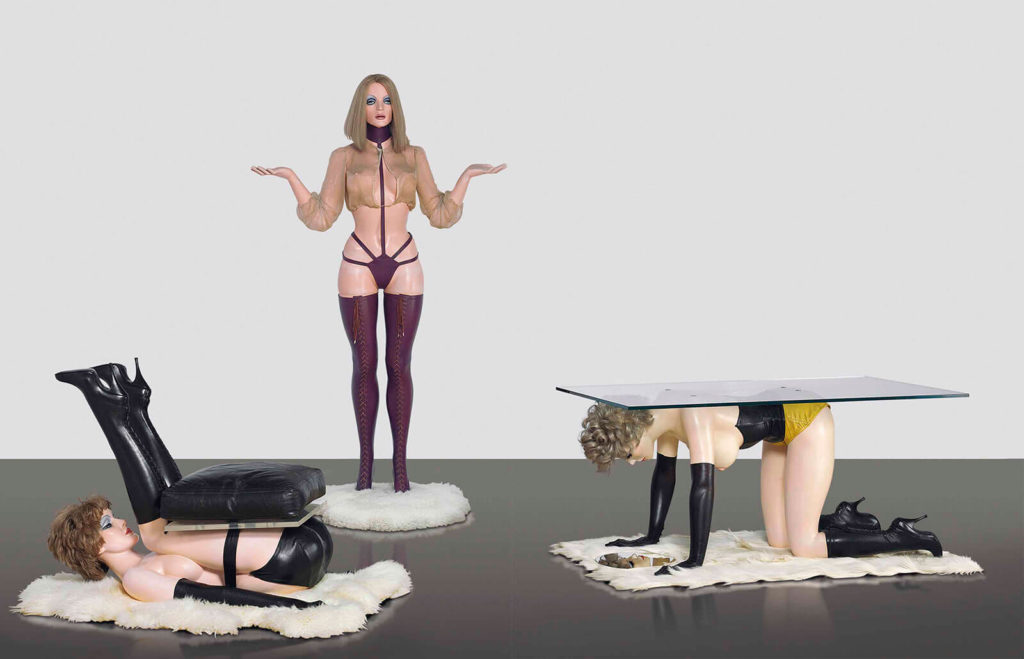
Allen Jones, ‘Hatstand, Table and Chair’, 1969
COURTESY: © Christie’s Images Limited 2021
Jones’s depiction of woman as a design object contrasts starkly with the Eames’s 1948 piece ‘La Chaise’. Inspired by Gaston Lachaise’s ‘Floating Figure’ (1927/1935), a startling sculpture, now in the Museum of Modern Art in New York, described by art critic Gerald Nordland as an embodiment of the “qualities of serenity, strength, and exalted womanhood”, ‘La Chaise’ echoes the curved silhouette and voluminous shape of the sculpture. Like Jones’s work, the Eames’s ‘La Chaise’ pushed the boundaries of modernism, both in materiality and form, however, their approach to the body was not one of objectification but of acknowledgement. Their chair was designed with the body in mind, to shape the position of the sitter in a way that replicated the elegant pose of Lachaise’s sculpture.
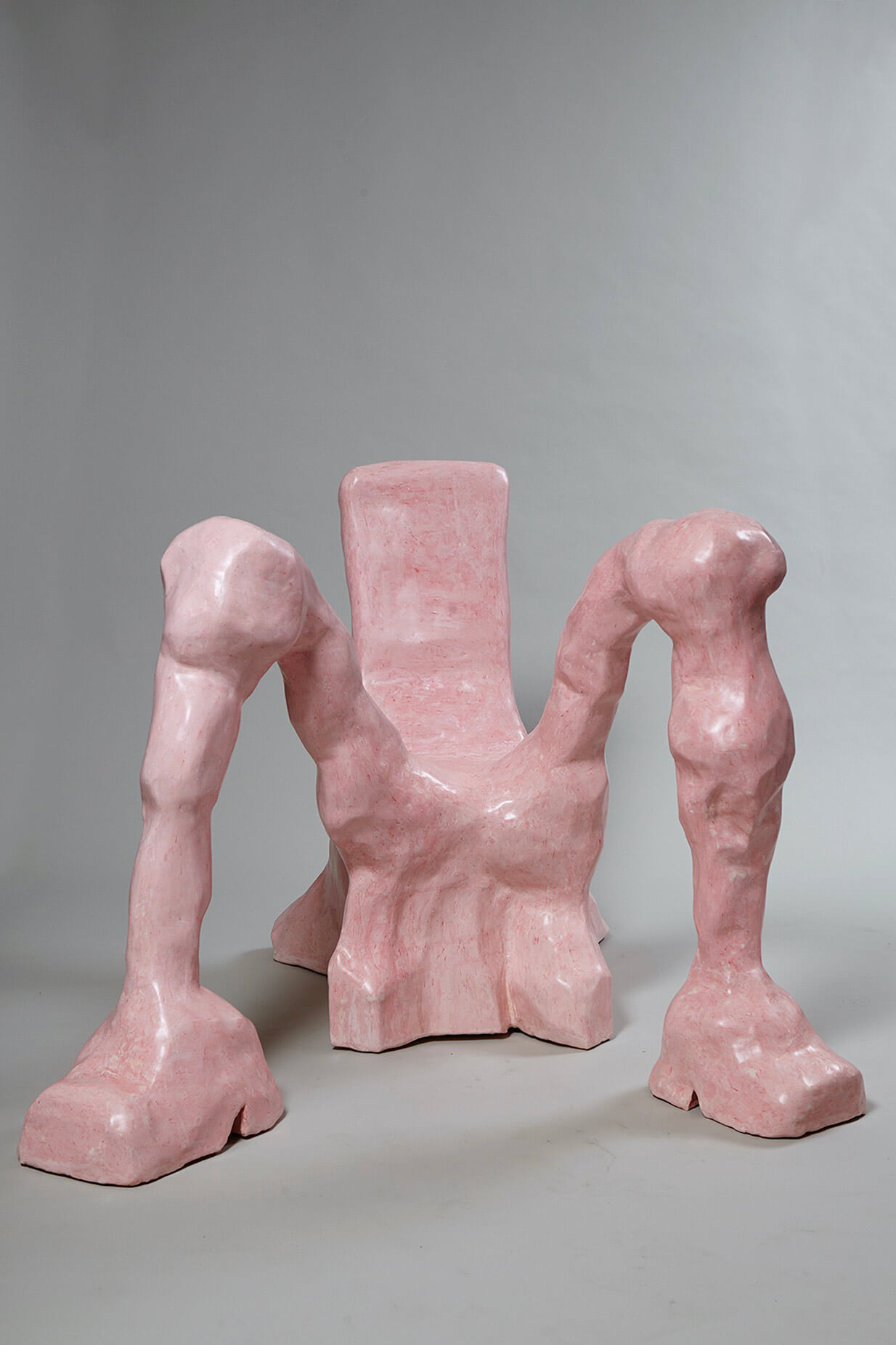
Anna Aagaard Jensen, ‘The Grand Lady’, 2018
COURTESY: Anna Jensen
Similarly occupied with using furniture to reimagine the conformation of the female body, but from the perspective of a woman, is designer Anna Aagaard Jensen. Legs spread, the unapologetic assertiveness of Jensen’s anthropomorphic ‘Grand Lady’ chair first captured the attention of the design world when it appeared in her graduate show in 2018. The women who sit in it (for only women are allowed) must also spread their legs, forcing them to recalibrate the way that they use their bodies and take up more space. “In the total expression of the body, this simple act is a big thing … Women’s clothing is designed to create a body that is neat and slim and tight and quiet. Women have to shapeshift in so many areas of their lives,” Jensen says.
Jensen’s work is not simply a critique of a male-dominated world. It is also a celebration of femininity in all its diverse and often contradictory forms. Her bulbous, womb-like bed entitled ‘Dear Mother’ illuminates the often hidden strength of birth and motherhood. Two ovary lamps frame the bed, shining a golden light, and the raised sides of the bed enclose occupants in a motherly embrace.

Anna Jensen, ‘Dear Mother, 2020
COURTESY: Anna Jensen
Though oversized and caricatured in its representation of the female reproductive system, Jensen’s bed nonetheless reveals an aspect of womanhood that has, for most of history, been obscured. Sophia Wallace, the artist and creator of the Cliteracy project, alludes to this in her much-viewed TED Talk. “How is it that we landed on the moon, and walked around, 29 years before discovered the anatomy of the clitoris?” So much of the female body is shrouded in mystery and yet, as Jensen declares, “The female reproductive system is so powerful. Why can’t I have big ovaries? Female genitals are still seen as taboo, even though we see dicks everywhere.”
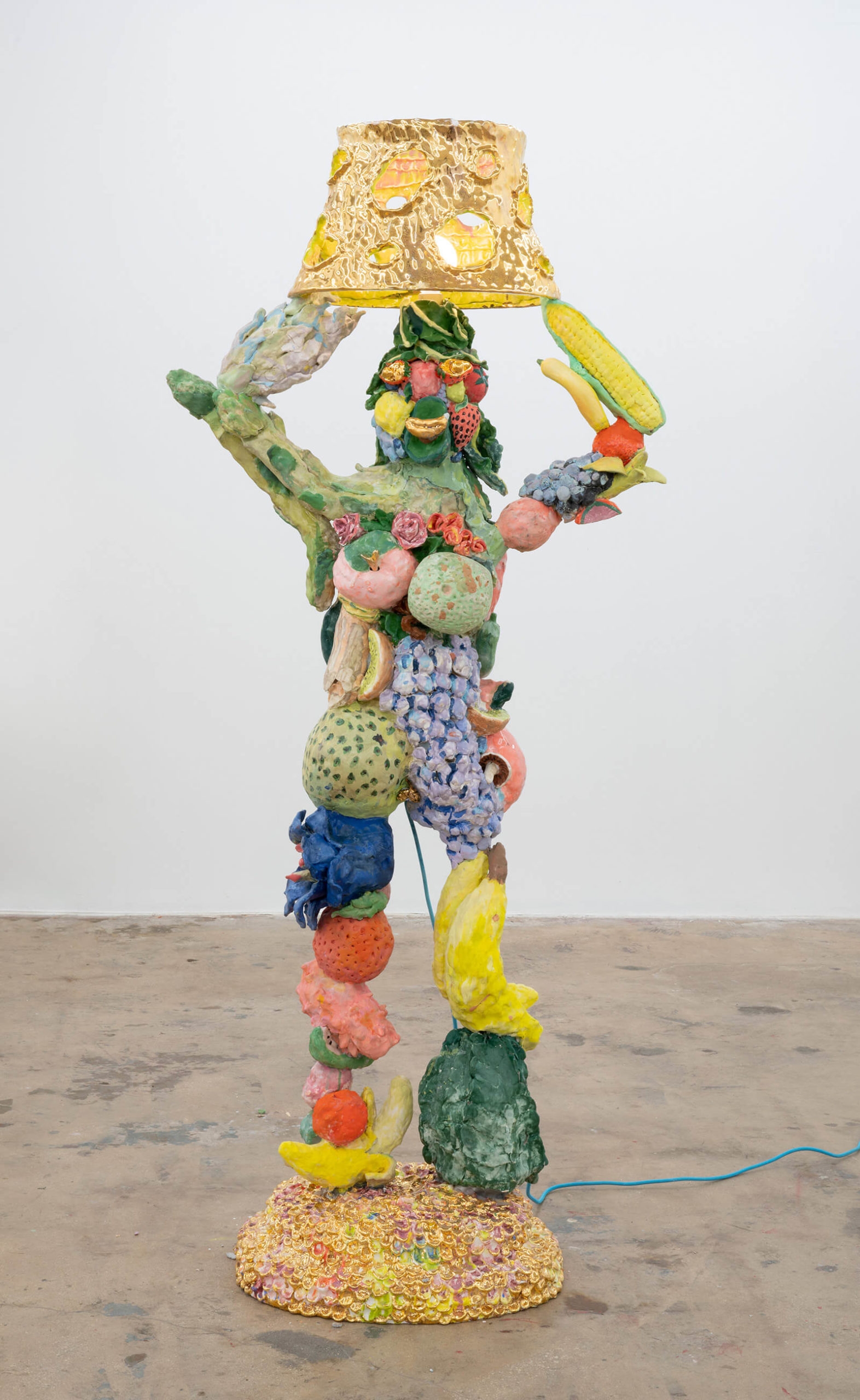
Katie Stout, ‘Fruit Lady (Gold)’, 2020
COURTESY: Nina Johnson Gallery
For artist Katie Stout, the female body offers endless possibilities. Now a signature part of her creative canon, her ‘Girls’ – as she fondly terms her lamps – began as an outlandish re-imagination of the Art Deco lady lamps popular in the early 20th century. Rejecting the poised, inanimate elegance of the Art Deco lamps, she imagines her ‘Girls’ as agents of mischief who could wander off at any moment, leaving the lampshade behind them. “I wanted to make the women expressive … I want [people] to feel that they’re alive.” Her approach to the body is flagrantly irreverent – wires pop out of orifices, light switches are disguised as golden nipples. By objectifying the female body to a comical extreme, she pokes fun at the genre of woman as a design object, revealing the absurdity of traditional ideas of femininity. As curator Alice Stori Liechtenstein comments, “Design objects can be an incredible and powerful way for female designers to experiment with alternative models and new visions of femininity. You can project both a vision of yourself and an ideal that does not exist yet.”
Currently preparing for an upcoming show at Venus over Manhattan, opening on the 25th March, the events of the past year have shifted Stout’s focus. The latest editions of her Arcimboldo-inspired ‘Fruit Lady’ sculptures bring the outside in. “I’ve been thinking a lot about vegetation … so many of us are yearning for life.” Adorned with ceramic bugs and slugs, these ladies have become “crazy microcosms” of life, alluding both to the need for nature that many have experienced after a year of lockdown and introducing an element of decay. These ladies capture the state of transition between life and death, sweet and sour, good taste and bad, continuing Stout’s challenge to the conventions of “good design”.
Artist Liz Hopkins, whose work features a clitoris-shaped desk and cave-like womb sculpture, has a more ambivalent attitude toward the labelling of their work as feminist. “I’m not gonna look at all my work and say this is a feminist statement. Maybe people might see it like that as I’m perceived as a woman … If I was a cis-dude and I had made a clit table, you wouldn’t be talking to me.” This is not to say that much of their work does not grapple with the narratives that have been used to categorise and demonise queer women. Many of the pieces exhibited in their debut solo exhibition ‘Gristle’ explored the lesbian smut books produced and enjoyed by men in the 1970s. However, the labelling of their work as political or feminist before it is considered as art, or simply furniture, indicates the disparity in the way the work of male, female and queer artists is received.
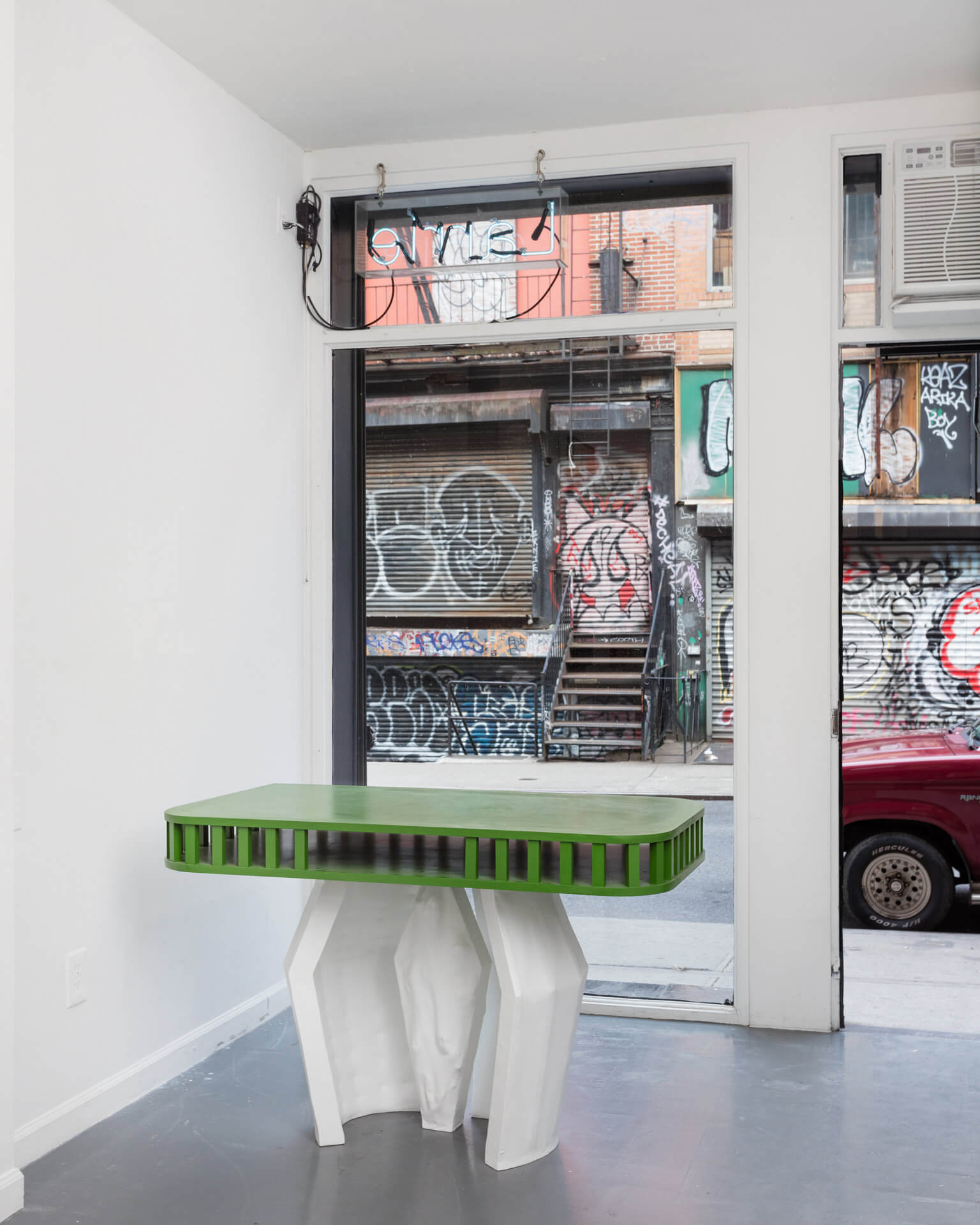
Liz Hopkins, ‘Green Screen Clit Desk’, 2020
COURTESY: Liz Hopkins
Hopkins’s designs tell stories. As pieces of furniture, intended first and foremost to be used and loved, their works capture and create moments of intimacy. The soft curve of two sleeping bodies is beautifully suggested in their ‘Spooning Legs in Black’ table. Made from fibreglassed bed sheets, and finished with a high-shine, latex-like veneer, the overall effect is playfully subversive. Although Hopkins first began to use bedsheets out of a need for cheap materials, it has now become one of their signature techniques. “Over time, I was able to manipulate the bedsheet just how I wanted it. I knew how to make it much more sculptural … and then it became skin.” The bedsheets offer a glimpse into the life of its previous owner. Every stain, snag, and tear has its own story.
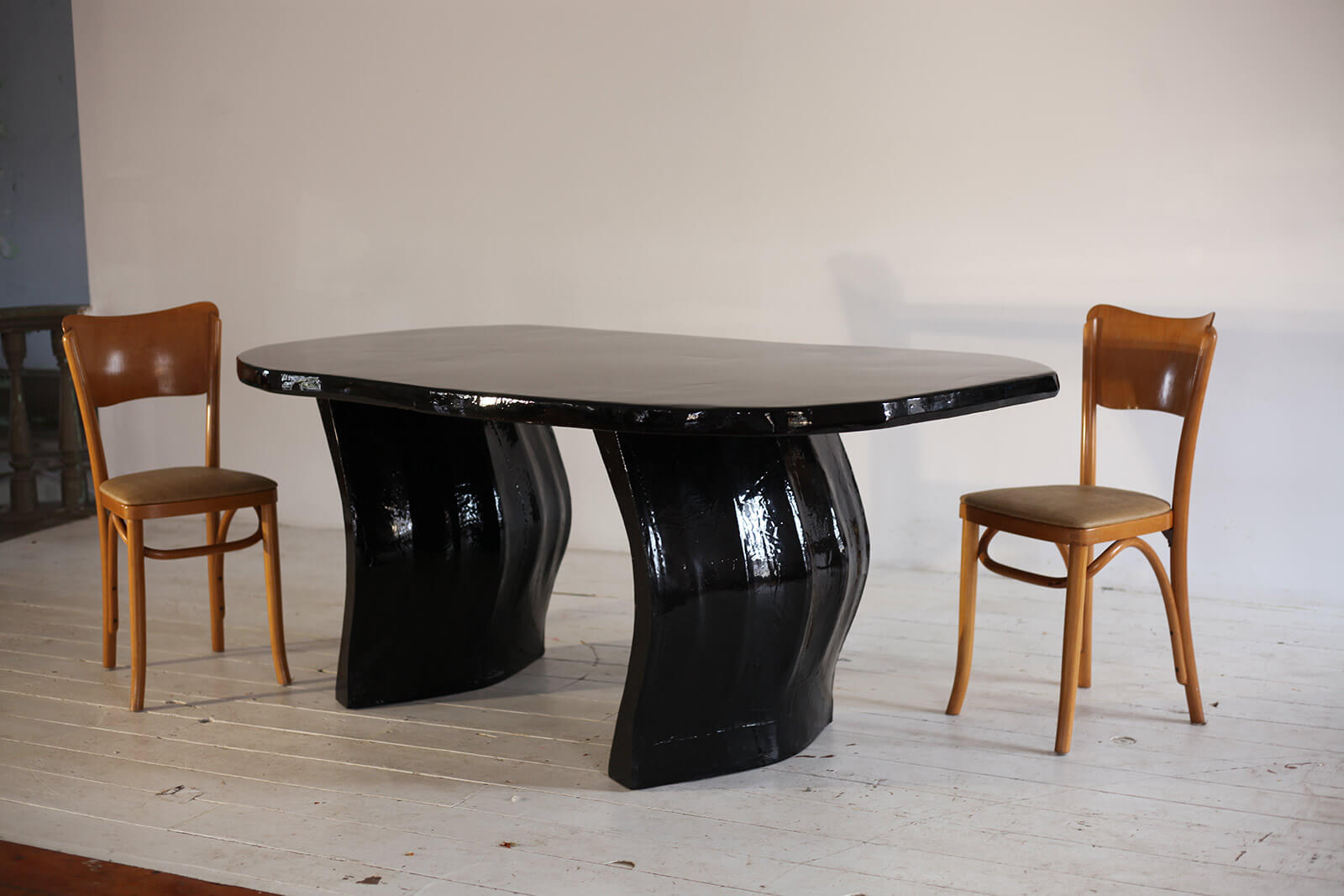
Liz Hopkins, ‘Spooning Legs in Black’, 2019
COURTESY: Liz Hopkins
Craftsmanship is essential to the work of each of these designers, as the objects are not just political statements. They are functional, well-made objects, which affect the spaces they inhabit. The message they convey is the more powerful because the objects themselves perform their function first.
And as to the success of these designers, according to Alice Stori Liechtenstein, it’s quite simple. “They make objects with skill and imagination, which explore original aesthetics and are open to interpretation. I think we need solid practical objects for every day, but we also need objects that make us dream and give us a sense of wonder. Objects you can look at over and over and lose yourself in.”
By representing the myriad ways that women can be, these artists are releasing the body from a history of objectification – an act that is both radical and rewarding.




